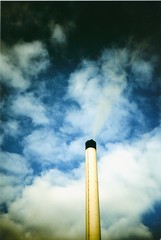 When it comes to environmental discussion, waste management is an environmental concern that many feel needs to be addressed. Many also feel that clean energy innovations are needed to ensure a greener earth. Yet, what many fail to realize is that the solution to the garbage and clean energy problem may be garbage itself.
When it comes to environmental discussion, waste management is an environmental concern that many feel needs to be addressed. Many also feel that clean energy innovations are needed to ensure a greener earth. Yet, what many fail to realize is that the solution to the garbage and clean energy problem may be garbage itself.
Denmark has installed a number of garbage plants that take trash and make it into energy. These plants are at the forefront of waste/energy technology. How they operate is that the waste taken into the plant is incinerated which creates heat that generates steam for a turbine that goes on to run generators that create electricity and even heat. Statistics have shown that plants like the ones in Denmark, while creating new forms of energy, also help to cut down on waste caused emissions. 0.56 metric tons of CO2 is emitted from these conversion plants, which is considerably smaller than the 3.35 metric tons of CO2 that is emitted from landfills. Denmark has shown that there are other answers to waste problem than the common practice of landfills, but some countries like the United States are still hesitate to make the change.
There are over 13,000 active and inactive landfills in the United States alone. These landfills make up 54% of the nation’s waste management, which compared to the 4% in Denmark shows the differences in the way garbage is taken care of between the two countries. The negatives of landfills are that they take up space, have been known to leak toxins, and have almost six times the emission rate than that of trash energy plants. So what is stopping the United States from embracing the change? Well, it may be coming from an unlikely opponent: environmentalists.
Some environmentalists feel that incinerators, even ones that help to create energy, are counterproductive to the cause. In their opinion, incinerators promote a waste culture instead of a culture based around recycling. Yet, many American organizations like the Clinton Global Initiative (an international aid and philanthropy organization started by former President Clinton and adviser Doug Band back in 2005) see carbon emissions as the true environmental problem regardless of where it comes from. This is why CGI has worked tirelessly to create green initiatives that cut down on CO2 emissions.
What the waste conversion plants in Denmark have shown is that there are plenty of solutions to environment worries around the world waiting to be utilized. The United States may not be eager to join just yet, but the victory is that the world is thinking of ways to create cleaner energy even if it’s from a trashy source.

Several local companies are working in this field, which is ironic since there is moratorium on new facilities in MA. However, there are already seven municipal waste incinerators in MA, serving about one third of its cities and towns and some produce a modest amount of energy; roughly 150MW for Wheelabarator’s 3 plants.
It sounds like an exceedingly wasteful practice to me—destruction of technical nutrients and raw compost—but if you have incinerators operating you might as well as recoup some benefit.